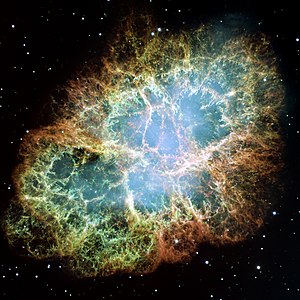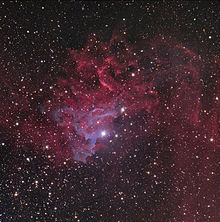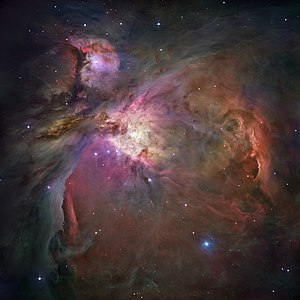Supernova Remant - Crab Nebula

The Crab Nebula (M1, NGC 1952, Taurus A, and Taurus X-1) is a plerion-type supernova remnant. The nebula was observed in 1731 by John Bevis. It is the remnant of a supernova that was observed and documented, as a star visible in daylight, by Chinese and Arab astronomers on July 5, 1054 (SN 1054). The explosion remained visible for 22 months. To this end, Charles Messier began his catalog of non-cometary objects. Located at a distance of approximately 6300 light years (1930 pc2) from Earth, in the constellation of Taurus, the nebula has a diameter of six light years (1.84 pc) and its speed of expansion is 1500 km / s .
Globular Cluster

Messier 79 (also known as M79 or NGC 1904) is a globular cluster in the constellation Lepus. It was discovered by Pierre Méchain in 1780. M79 is at a distance of about 41,000 light years from Earth and 60,000 light years from the galactic center.
Flaming Star Nebula

IC 405 (also known as the Flaming Star Nebula, SH 2-229 or Caldwell 31) is an emission and reflection nebula [1] in the constellation Auriga north of the celestial equator, surrounding the bluish star AE Aurigae. It shines with a magnitude of +6.0. Its celestial coordinates are RA 05h 16.2m dec + 34 ° 28 ′. [2] It surrounds the irregular variable star AE Aurigae and is near the emission nebula IC 410, the open clusters M38 and M36, and the K-class star Iota Aurigae.
The nebula measures approximately 37.0 ‘x 19.0’ and is approximately 1,500 light years distant from Earth. [2] The proper motion of the central star is believed to date back to the Orion Belt area. [2] The nebula is about 5 light years across.
Nebula de Orion

The Orion Nebula, also known as Messier 42, M42, or NGC 1976, is a diffuse nebula located south of Orion’s belt.6 It is one of the brightest nebulae in existence, and it can be observed with the naked eye over the night sky. It is located 1270 ± 76 light years from Earth, 2 although its distance has now been measured at 1,350 light years, and it has an approximate diameter of 24 light years. Some documents refer to it as the Great Orion Nebula, and the oldest texts call it Ensis, a Latin word that means “sword”, a name also received by the star Eta Orionis, which from Earth is observed very close to the nebula .

